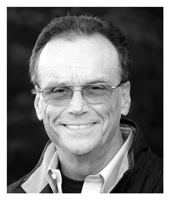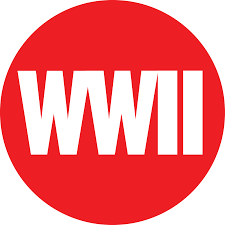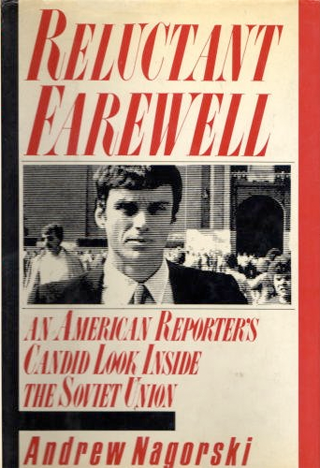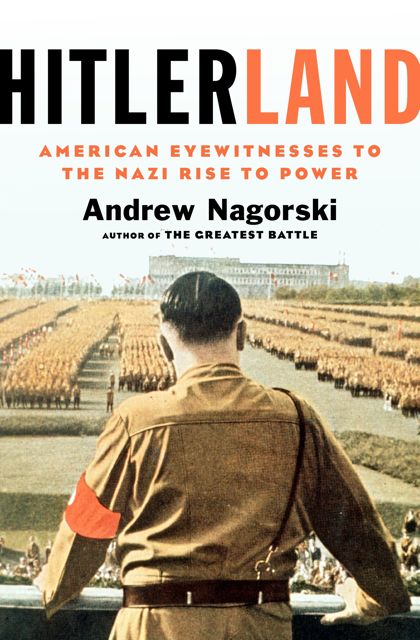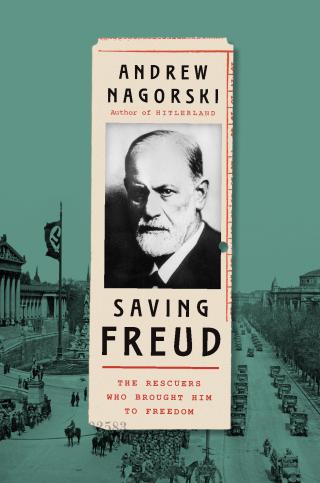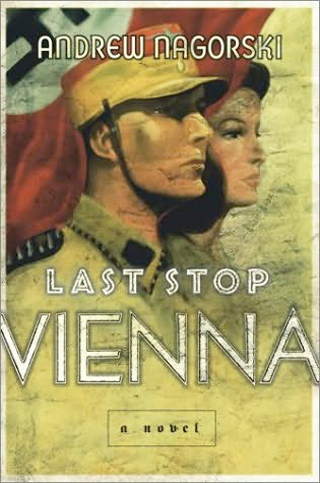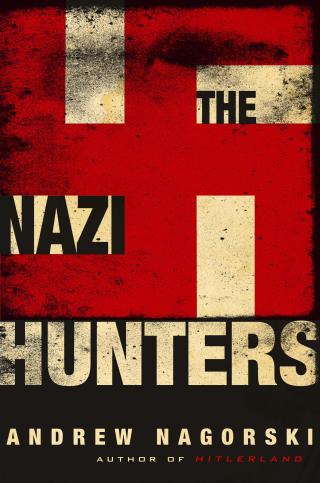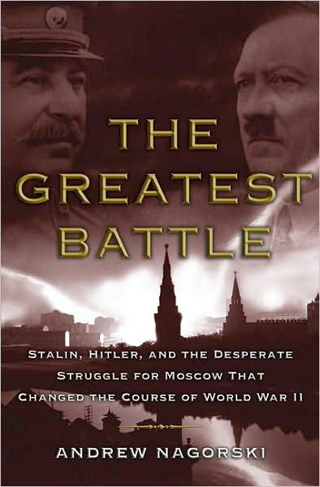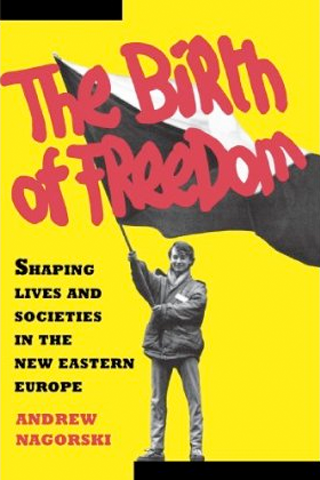At six foot four inches tall, Truman Smith cut an imposing figure, and possessed an impressive pedigree. Smith's grandfather had served as a U.S. senator, and his father was a military officer who was killed in action in the Philippines in 1900. Young Smith was no slouch himself: he graduated from Yale in 1915, and might have become a history professor. But after he joined the New York National Guard, his regiment was called up for duty on the Mexican border in 1916. This ended his graduate studies and led him to a military career instead. He became a battalion commander in World War I, and earned a Silver Star.
Smith was an avid student of German language and culture, and his expertise earned him postings to Germany during two of its most momentous periods. He first served as a political adviser to the U.S. Army in Coblenz in 1919, then served in the Berlin embassy from 1920 to 1924. About a decade later, he returned to Germany to work as a senior military attaché in the crucial run-up years to World War II—1935 to 1939.
During Smith's first stint in Berlin, Adolf Hitler's name was just beginning to be heard around the country. Those were the early days of the Weimar Republic, a period of chronic political and economic unrest that offered plenty of opportunities for violent extremists on both the far right and far left. Hitler's National Socialist German Workers' Party was only one group of radicals among many others.
That would change, of course. In Berlin, the American ambassador Alanson B. Houghton, an industrialist-turned-congressman-turned-diplomat, was deeply troubled by the turmoil in Germany and, in particular, by the political unrest in the southern part of the country. In the fall of 1922, there were rumblings that General Erich Ludendorff, who had led the German army in the later half of World War I, might be planning to topple the government and impose a right-wing dictatorship. After a brief exile following Germany's defeat, Ludendorff returned to Munich and took up with Hitler and other rabble-rousers. Against the backdrop of Benito Mussolini's ascent in Italy, Germany's political far right seemed on the rise. "Something is brewing in Bavaria and no one seems to know exactly what it is," Houghton wrote in his diary.
To keep an eye on the situation, Houghton turned to his young assistant military attaché, Truman Smith. Smith would later point out that most foreign diplomats in Berlin at the time had written off the National Socialists as "being without significance," and described the party leader Adolf Hitler as an "uneducated madman." Houghton, in contrast, "seems to have had, even at this early date, a premonition that the movement and its leader might play an important role in the disturbed Germany of the early twenties." Ambassador Houghton and the embassy's military attaché, Smith's immediate superior, urged Smith to "try to make personal contact with Hitler himself and form an estimate of his character, personality, abilities, and weaknesses."
Smith did just that. He was the first American diplomat to interview Hitler—and in the 1920s he wrote uncannily prescient reports about the future leader of Germany. What's more, during his second posting in Germany, Smith cleverly used Charles Lindbergh to obtain a firsthand look at the country's aviation capabilities, enabling him to produce a steady stream of largely accurate assessments of the Luftwaffe as well as Hitler's rapid military buildup in the late 1930s. However, the Roosevelt Administration, aware of the isolationist mood at home, paid little attention to Smith's reports. Some columnists and politicians would even claim that Smith had been taken in by propaganda and thus exaggerated his accounts of Germany's strength. This might explain why Smith receives only passing mention in the major historical works about the prewar period—and was never adequately credited for his early warnings about the German juggernaut.
Truman Smith arrived in Munich on November 15, 1922, and quickly met a diverse group of people, recording his discussions and impressions. The 29-year-old diplomat asked everyone about Hitler. Summarizing the views of Robert Murphy, the acting U.S. consul, Smith wrote: "Hitler thoroughly understands the Bavarian psychology. Whether he is big enough to take the lead in a German national movement is another question; probably not."
General Friedrich Freiherr Kress von Kressenstein, the artillery commander of the German army's 7th Division, told Smith he hadn't met Hitler but had the impression that the man was "an oratorical genius." He added that "Hitler was not as radical as his speeches made him out," and that he was anti-Semitic in "a healthy sense" since he wanted to keep Jews out of government positions. Barring some mistake, Kress von Kressenstein told Smith, Hitler's movement had "a great future before it." Friedrich Trefz, chief editor of the newspaper Münchner Neueste Nachrichten(Munich Latest News), agreed. He told Smith that Hitler was a "marvelous speaker. None better." Trefz said that he'd gone to a National Socialist meeting and sat between a general and a Communist; both had attended out of curiosity, and afterward both signed up as party members. Trefz's conclusion: "The National Socialists present no immediate danger to the government. The ground is fertile, however, and the party will grow."
Smith next ventured to the informal headquarters of the National Socialist German Workers' Party, at Georgenstrasse 42. There he met with Max Erwin von Scheubner-Richter, an early confidante of Hitler who claimed that the party had 35,000 members in Munich, 200,000 sympathizers, and a "militarily organized" underground armed with clubs and pistols. The American was then invited to watch Hitler review his paramilitary troops, the Brown Shirts. It was "a remarkable sight indeed," Smith noted. "Twelve hundred of the toughest roughnecks I have ever seen pass in review before Hitler at the goosestep under the old Reichflag wearing red armbands with Hakenkreuzen(swastikas)." The Nazi leader gave a short speech, vowing to defy anyone trying to stop the movement. "He then shouts, 'Death to the Jews' etc. and etc. There was frantic cheering. I never saw such a sight in my life."
At 4 p.m. on Monday, November 21, Smith met Hitler at the party headquarters. The diplomat was startled by Hitler's quarters, which reminded him of a dreary back room of a New York tenement house. Smith's impressions that day, which he recorded in his notebook once he had returned to his room in the Hotel Marienbad, were right to the point. "A marvelous demagogue," he wrote. "I have rarely listened to such a logical and fanatical man. His power over the mob must be immense." Hitler's message was unequivocal: "Parliament and parliamentarianism must go. No one can govern with it in Germany today. Only a dictatorship can bring Germany to its feet."
In a report he filed after returning to Berlin, Smith added this assessment:
The question whether Hitler's National Socialists can play a role in Germany equivalent to the role of the Fascisti in Italy can still not be answered with any degree of certainty. In the limited area of Bavaria, south of the Danube, Hitler's success cannot be gainsaid…. It is believed that not only in Munich but in all Germany, there is a fertile field even among the factory workers for a national movement…. It seems hardly probable, furthermore, that with the results already achieved, there will be any lack of money for the propagation of the idea of a national dictatorship. These facts, coupled with the magnetism and oratorical ability of the National Socialist leader, speak for a rapid and consistent development of the German "Fascisti."
The ensuing years confirmed Smith's observations. By the time he and his wife Katharine, known as Kay, returned to Berlin in 1935, Hitler was fully in command. They were immediately struck by how the capital had changed since the early 1920s. Berlin "was the same yet not the same," Kay wrote in her memoirs, which were never published and reside in the archives of the Hoover Institution. "The streets, the buildings were all as I had known them. But now no more shabby fronts and broken fences. All was clean, freshly painted…. The crowds well dressed, the people looking well nourished, energetic." But Kay Smith also detected "a certain tenseness" in the air, the product of a regime that was ready to target anyone.
Unlike many of his counterparts in other embassies, Smith had no budget to pay for spies. What he did have was a long list of German contacts—officers he had met during his first tour in Germany and later when he was an instructor at the Infantry School at Fort Benning, Georgia, from 1928 to 1932. The assistant commandant of the Infantry School was George C. Marshall, then a lieutenant colonel, who treated Smith as an aide and translator when it came to dealing with visiting Germans.
After the Nazis took power in 1933, they forbade any German officer from visiting the house of a foreigner unless he knew the foreigner previously. This meant most military attachés were effectively prevented from inviting German officers to their homes. But Smith was already well established in that circle: When he held a party upon the couple's return to Berlin, Kay Smith recalled that "the other attachés were dumbfounded to find so many German officers at our reception. They were green with envy and Truman became their prime target in their attempt to get news." By comparison, Kay noted, the British and the French, who relied heavily on paid spies, "were remarkably bare of contacts."
Now a colonel, Smith worked obsessively to learn about the German military. Early in his second tour, he carefully noted the insignia of regiments that were displayed on the shoulders of German officers, piecing together valuable information, and even enlisting Kay and their daughter Kätchen to help with this task. "Whenever we drove out in the car together she [Kätchen] would take one side and I the other, our faces pressed against the window pane," Kay wrote. "It made an amusing game for us and we had the feeling of helping solve the riddle."
Early on, Smith realized there was one picture he could not put together. He had few contacts with the Luftwaffe and "negligible" knowledge of the German air force's organization, tactics, or technical capabilities. Captain Theodore Koenig, the American assistant attaché responsible for monitoring Germany's growing air power, was a capable officer. But Smith worried that his team was too small and poorly equipped to effectively analyze the Luftwaffe—an urgent task as Hitler pushed to reassert Germany's might.
In May 1936, two months after German troops had moved into the demilitarized Rhineland, Kay and Truman were having breakfast when she pointed out a front-page story in the Herald Tribune about Charles Lindbergh's visit to an airplane factory in France. Truman wondered if the famous airman, whose transatlantic flight had captured the imaginations of people everywhere, could gain the same kind of access to German factories. He checked with aides to the supreme Luftwaffe commander Hermann Göring, who said they would be pleased to show Lindbergh their combat units and factories. Smith wrote a letter to Lindbergh on May 25, relaying this invitation.
Smith had never met Lindbergh, but didn't hesitate to make a forceful case. "I need hardly tell you that the present German air development is very imposing and on a scale which I believe is unmatched in the world," he wrote. Pointing out that the Luftwaffe's buildup had been shrouded in secrecy until recently, he added that the Germans had demonstrated a greater openness to Americans than to representatives of other nations. "General Göring has particularly exerted himself for friendly relations with the United States," Smith added. "From a purely American point of view, I consider your visit here would be of high patriotic benefit. I am certain they will go out of their way to show you more than they will show us."
Smith's appeal to Lindbergh, who was then living with his wife Anne in England, would prove to be a brilliant and fateful initiative. Lindbergh replied that he would be "extremely interested in seeing some of the German developments in both civil and military aviation." Smith was aware that the Germans would seek to exploit Lindbergh's visit for propaganda purposes, but he could do nothing to prevent it. He focused on persuading the Germans to allow Lindbergh to inspect a long list of airplane factories, research facilities, and Luftwaffe units, accompanied by himself or assistant attaché Captain Koenig. That way, the American attachés would be able to scrutinize the installations and make valuable new contacts.
When the Lindberghs flew to Berlin aboard a private plane in July 1936, they were greeted by Ministry of Aviation officials, Deutsche Lufthansa airline executives, and other representatives of German aviation. The Smiths put the Lindberghs up in their apartment, and the two couples struck up a friendship. "Colonel Smith is alive, questioning, and talks well," Anne Morrow Lindbergh recorded in her diary, adding of Kay, "She is observant, intelligent, and amusing."
The most important social event during Lindbergh's visit was a formal luncheon at Göring's official residence on Wilhelmstrasse. It was attended by top aviation officials, including the legendary World War I pilot Ernst Udet. The Lindberghs and the Smiths were treated as honored guests. For Truman Smith, this was the first time he had the chance to observe and talk with the Luftwaffe's chief—and he took full advantage of the occasion. "Göring showed many facets of his personality," he noted. "In turn he was magnetic, genial, vain, intelligent, frightening, and grotesque."
Lunch was an elaborate affair, and after the meal, Lindbergh asked Göring if the guests could see his pet lion cub. The host happily obliged. They were ushered into the library, and the doors were dramatically opened for the young lion. "I want you to see how nice my Augie is," Göring announced. "Come here, Augie." Göring was sitting on a sofa and the lion bounded to him, jumping onto his lap and licking his face. Kay Smith later recorded what happened next: "The startled lion let loose a flood of yellow urine all over the snow white uniform!" Göring pushed the cub off him and jumped up, "his face red with anger, his blue eyes blazing." Emmy Göring rushed over, putting her arms around him. "Hermann, Hermann, it is like a little baby," she pleaded. "There are too many people!" Göring calmed down, and rushed off to change. Returning, he was dressed "in a pongee suit, whiffs of eau de Cologne, and a diamond pin," Anne Morrow Lindbergh wrote. The lunch allowed Smith to start a relationship with Göring that lasted for the rest of his tour of duty in Berlin.
Lindbergh proved to be just the intelligence wedge Smith needed. The real payoff came from the American pilot's visits to Germany's air installations. At the Heinkel factory in Rostock, for instance, Lindbergh and Koenig were allowed to inspect the new He 111 medium bomber. Lindbergh concluded that it was comparable to British and American bombers, and superior to French ones. They also watched Udet fly a new He 112 fighter prototype—and saw the plane disintegrate during a dive, forcing the famed pilot to parachute to safety. Still, based on what they saw of those and two other Heinkel planes—the fast and versatile He 70 and the He 118 dive-bomber prototype—along with the company's modern factory for navy planes at Warnemünde, the Americans were impressed. "I have never seen four planes, each distinct in type and built by one manufacturer, which were so well designed," Lindbergh told Smith.
The aviator was clearly swayed. Writing to a family friend, Lindbergh pointed out that "we have nothing to compare in size to either the Heinkel or Junkers factories." In a letter to his lawyer, he professed he was struck by "a spirit in Germany which I have not seen in any other country." After his first visit, he wrote again to the family friend, "While I still have many reservations, I have come away with a feeling of great admiration for the German people." As for Hitler, he wrote, "he is undoubtedly a great man, and I believe he has done much for the German people."
Thanks to the Lindbergh entrée, Koenig visited various airfields and factories, which in turn enabled Smith to produce increasingly detailed reports about German air capabilities for officials in Washington. After Lindbergh's second visit, in October 1937, Smith asserted that if current trends continued, Germany would "obtain technical parity with the USA by 1941 or 1942." If the United States slowed down its program, he warned, "German air superiority will be realized still sooner."
Göring may have deliberately exaggerated some of his claims about Germany's capabilities, but Lindbergh took them seriously. At a cocktail party, Lindbergh was overheard telling Udet: "German aviation ranks higher than that in any other country. It is invincible." No wonder German officials boasted that Lindbergh would be "the best promotion campaign we could possibly invest in."
Lindbergh made four more visits to Germany before the start of World War II, and was treated like royalty during each. This might help explain his subsequent vocal campaign to keep the United States out of the war in Europe, his involvement in the America First movement, and his conviction that the Soviet Union represented the real threat to European civilization—and that, in a war between the two powers, "a victory by Germany's European people would be preferable to one by Russia's semi-Asiatic Soviet Union." His remarks confirmed what his critics had suspected: the aviator had become, in effect, an apologist for Hitler.
For his part, Smith was convinced that Washington needed to understand the breathtaking scope of Germany's military buildup, but his reports were often dismissed as alarmist. To be sure, not all of the intelligence Smith gathered was on target. He made some erroneous assessments about the degree of disaffection between the Nazis and the military, and was certainly off when he described "Hitler's realistic and reticent foreign policy," as he put it in 1937. But on balance, the regular intelligence reports Smith sent to Washington were clear-sighted and trenchant. Thanks to the factory doors Lindbergh had opened, he was the best-informed attaché in Berlin on the Luftwaffe.
But the diplomat's association with Lindbergh also brought him grief. Like the aviator, Smith was accused by some of being a Nazi dupe. After he was diagnosed with diabetes and left Berlin in April 1939, Smith was assigned to Washington by General George C. Marshall, then the army chief of staff, to serve as an adviser on the German military. As Hitler's armies swept across Western Europe, Smith heard from colleagues in army intelligence that Supreme Court justice Felix Frankfurter and secretary of the interior Harold Ickes were behind attacks against him written by the influential columnists Drew Pearson and Walter Winchell. They charged that Smith was pro-German and was writing Lindbergh's isolationist speeches after Germany invaded Poland. Smith also heard reports that the two officials had urged Roosevelt to have him court-martialed.
Nothing of the sort ever happened, for good reason. While Smith maintained his friendship with Lindbergh, he never played any role in the aviator's political activities. And he began getting a measure of the recognition he deserved for his reporting from Berlin. On Marshall's recommendation, Secretary of War Henry Stimson awarded the Distinguished Service Medal to Smith in January 1945. Five months later, one of FDR's advisers wrote to General Marshall: "How well and how timely were his warnings about German preparations! And what little attention we paid to them!"
Smith retired from the military in 1946 and moved back to Connecticut. He made a run for Congress, but lost the Republican primary. He had more success writing articles on military affairs, but remained shadowed by suspicions related to his Berlin service, despite testimonies to his outstanding performance.
Long after World War II, Smith wrote The Facts of Life, an autobiographical manuscript that he tried but failed to publish. Fourteen years after his death in 1970, it would finally appear in print, along with his Munich notebook and his military reports, in a Hoover Institution Press volume called Berlin Alert: The Memoirs and Reports of Truman Smith. In The Facts of Life, Smith recalled his meeting with Hitler in 1922. "The diary I kept in Munich indicates that I was deeply impressed with his personality and thought it likely he would play an important role in German politics," he wrote. "I must confess, however, that I did not see him as the future ruler of most of Europe."
He may have got that and a few other things wrong—but the overarching point of his reports was right on target: Germany was remilitarizing faster than most of Washington realized, and represented a growing danger. The perceptions of a man who once aspired to teach history were validated by the historical record.
Andrew Nagorski is the former Newsweek Berlin bureau chief, and is now vice president and director of public policy at the EastWest Institute. He is the author of The Greatest Battle: Stalin, Hitler, and the Desperate Struggle for Moscow That Changed the Course of World War II (2008). His article is adapted from his forthcoming bookHitlerland: American Eyewitnesses to the Nazi Rise to Power (Simon & Schuster, March 2012).
